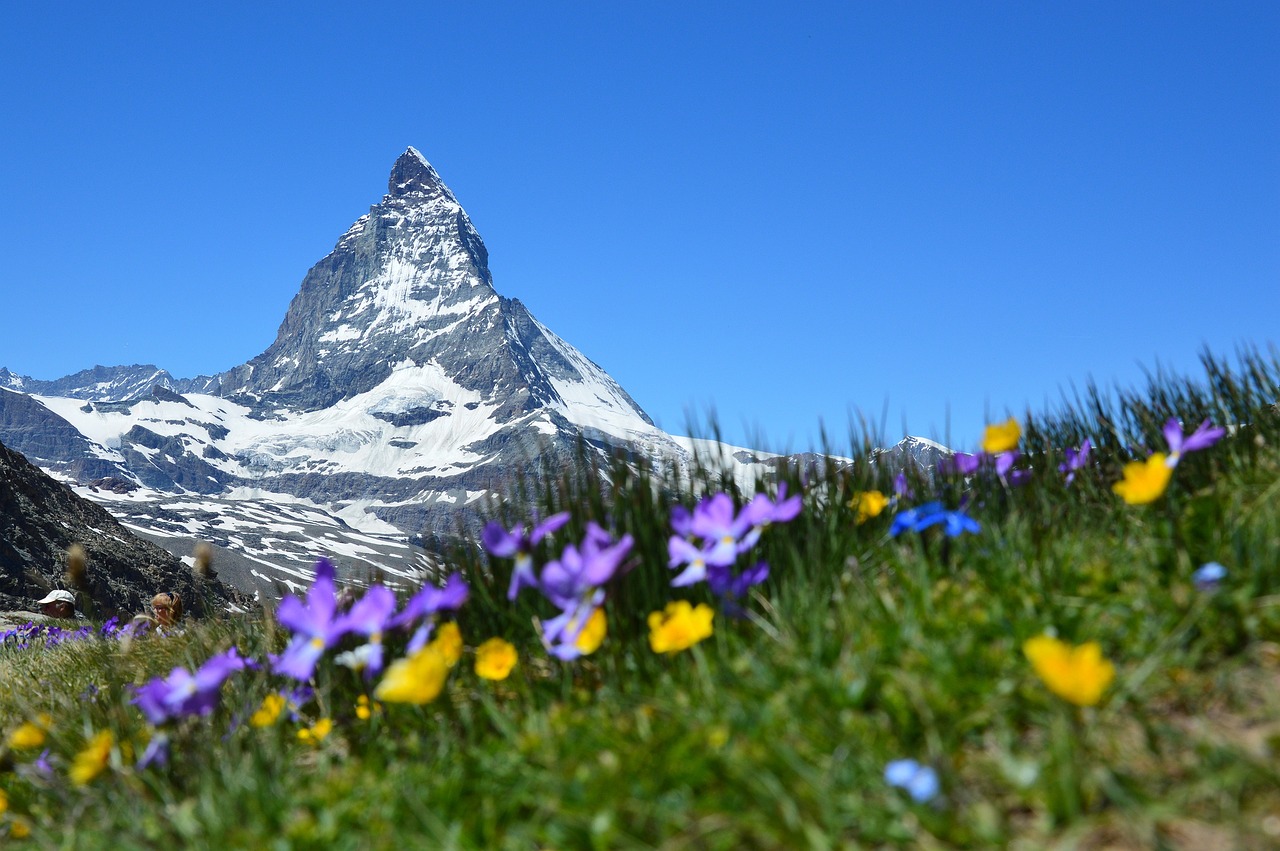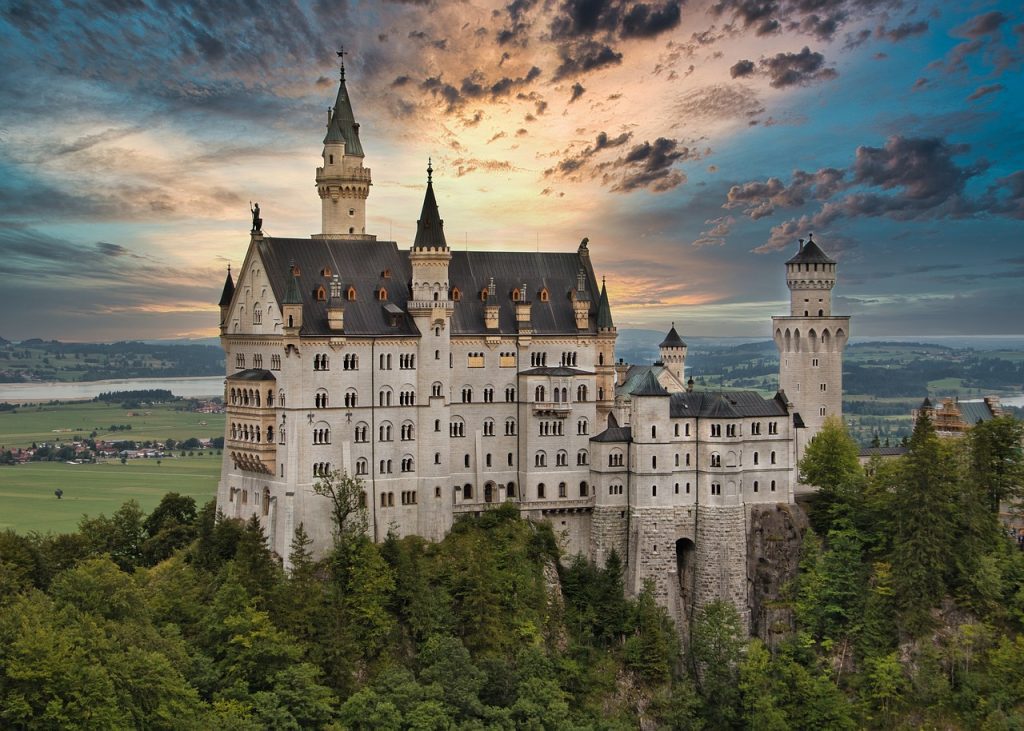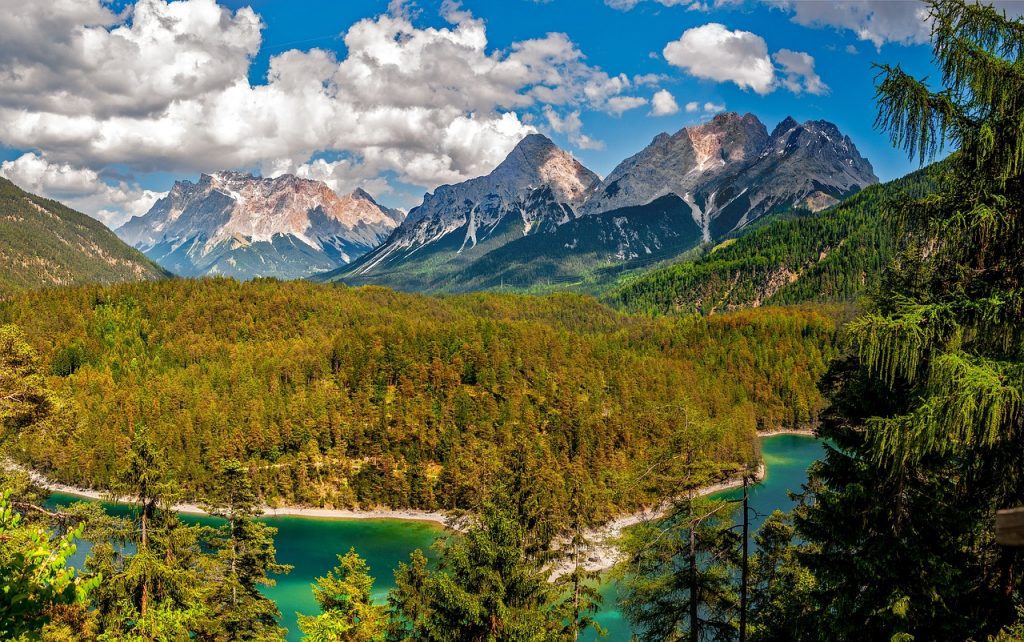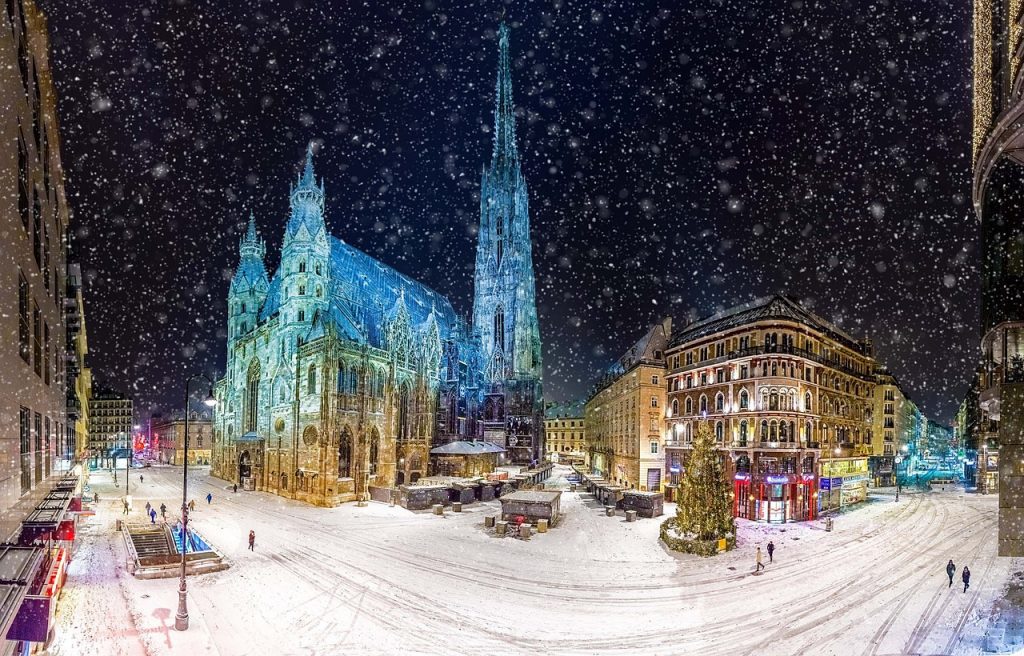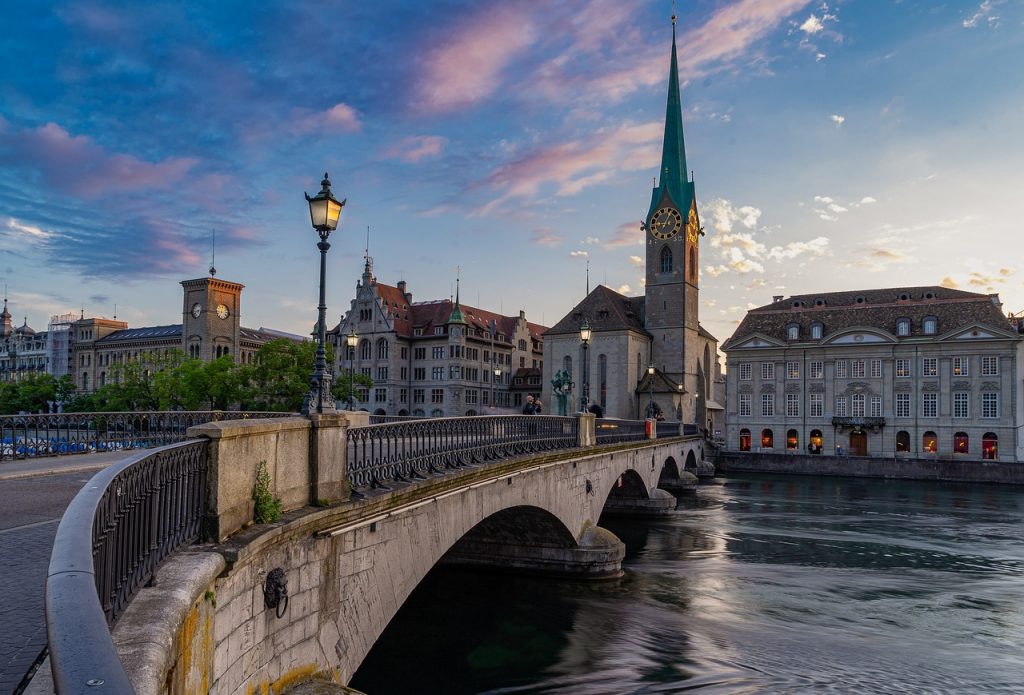Switzerland is a land of majestic mountains, pristine lakes, and charming cities. It offers a diverse palette of experiences throughout the year. The country something for you whether you’re an adventure seeker, a culture enthusiast, or a nature lover. Learning about the nuances of the country’s seasons is key to identifying the best time to visit Switzerland and crafting an unforgettable journey.
From favorable weather to avoiding crowds and embracing wilderness, each facet of your Swiss sojourn has its prime time. Here’s your guide to finding the best time to go to Switzerland and enjoy the magical splendor that awaits.
Visiting Switzerland based on the Weather
Switzerland’s weather dances to the rhythm of its seasons, painting the landscapes with changing hues. For milder temperatures and outdoor adventures, spring (April to June) and fall (September to October) are optimal. During these periods, temperatures range from 45-70°F (7-21°C), creating a pleasant atmosphere for exploration.
Winter months (December to February) can be chilly, with temperatures averaging around 25-40°F (-4 to 4°C). While the snow-covered Alps create a picturesque setting, colder temperatures and reduced outdoor activities might deter some visitors. However, Switzerland’s majestic mountains create the picturesque landscapes that people covet while skiing the Swiss Alps.
Switzerland, nestled in the heart of Europe, experiences a diverse range of climates due to its varying altitudes and geography. Here’s a description of the seasonal weather in Switzerland:
1. Spring (March to May):
- Spring temperatures in Switzerland can range from 41°F (5°C) to 59°F (15°C) in lower elevations.
- Spring marks the end of winter with milder temperatures and the emergence of colorful flowers. It’s an excellent time for hiking and exploring cities.
- March is more diverse with weather displaying a combination of winter and pending warmer spring weather.
2. Summer (June to August):
- Swiss summers vary but generally range from 59°F (15°C) to 77°F (25°C) in lower regions.
- Summers are warm and sunny, making it a popular time for outdoor activities like hiking, biking, and lake swimming. Mountain regions offer relief from the heat.
3. Autumn (September to November):
- Autumn temperatures range from 50°F (10°C) to 68°F (20°C) in lower elevations.
- Autumn brings pleasant weather with colorful foliage, making it an ideal time for scenic drives, wine tasting, and hiking.
4. Winter (December to February):
- Swiss winters can be cold, with temperatures ranging from 23°F (-5°C) to 41°F (5°C) in lower areas.
- Winters are ideal for skiing and snowboarding in the Swiss Alps. Higher elevations offer excellent snow conditions, but temperatures can drop significantly.
Other Weather-Related Factors:
- Rainfall: Switzerland generally experiences moderate rainfall year-round, with slightly wetter conditions in the spring and autumn. Rainfall varies by region, with drier conditions in the east.
- Snowfall: In mountainous regions, snowfall can occur from late autumn through early spring, making it a prime destination for winter sports enthusiasts.
Avoiding Extreme Weather:
- Winter Cold: If you’re not a fan of cold weather or winter sports, it’s best to avoid visiting Switzerland during the winter months, especially in the high Alpine areas where temperatures can be extremely cold.
- Avalanche Risk: In high-altitude regions during the winter, there may be an increased risk of avalanches. Travelers should stay informed about local conditions and follow safety guidelines.
In summary, the best time to visit Switzerland depends on your preferences for weather and activities. Summer is popular for outdoor adventures, while spring and autumn offer milder temperatures and scenic beauty. The months of May or September are probably the best time to visit Switzerland. The good weather and fewer crowds makes it easy to enjoy most activities.
Winter is perfect for skiing and winter sports but may not be suitable for everyone due to the cold. Be sure to consider the specific regions you plan to visit in Switzerland, as climate and weather conditions can vary significantly across the country.
Visiting Switzerland based on the Crowds
To escape the tourist rush and savor the Swiss charm without the hustle, consider planning your trip during the shoulder seasons occurring during the months of April, May, September and October.
Spring and fall offer a more serene experience as popular attractions are less crowded, allowing you to immerse yourself in the beauty of the landscapes. The temperatures may be a bit more chilly, but usually not in a way that deters enjoying the splendor of the outdoors.
Discover Switzerland’s Cultural Experiences
Switzerland’s cultural tapestry is woven with art, music, and traditions. If you’re keen on cultural events, keep an eye out for performances by renowned orchestras or theater troupes that take place year-round. Delve into local customs by participating in Swiss National Day celebrations on August 1, when the entire country comes alive with festivities, parades, and fireworks.
Switzerland is a treasure trove of cultural events that celebrate its rich heritage, art, music, and traditions. Here are 10 of the most iconic annual cultural events that take place across the country:
- Basel Fasnacht – February/March: Taking place in the city of Basel during the days leading up to Ash Wednesday, Basel Fasnacht is a vibrant carnival celebrated with colorful parades, elaborate costumes, and lively music. The festivities begin at precisely 4:00 AM on the Monday after Ash Wednesday.
- Montreux Jazz Festival – July: Held in the picturesque town of Montreux on the shores of Lake Geneva, the Montreux Jazz Festival is a world-renowned event that draws music enthusiasts from all over. The festival, typically held in July, features an impressive lineup of international and Swiss musicians across various genres.
- Geneva International Motor Show – March: Car aficionados flock to the Geneva International Motor Show, held in March, to witness the unveiling of the latest automobile innovations and designs. This prestigious event showcases cutting-edge cars, concept vehicles, and automotive technology.
- Locarno Film Festival – August: The Locarno Film Festival, held in the charming town of Locarno, is one of the oldest film festivals in the world. Taking place in August, the festival screens a diverse range of international and Swiss films against the stunning backdrop of Lake Maggiore.
- Lucerne Festival – Summer and Autumn: The Lucerne Festival is a celebration of classical music, attracting renowned orchestras, conductors, and soloists from around the globe. The festival features multiple editions throughout the year, including the Summer Festival and the Piano Festival.
- Zürich Street Parade – August: The Zürich Street Parade, held in August, is Europe’s largest techno and electronic music festival. Dance enthusiasts gather to enjoy a colorful procession of music trucks and stages along the city’s picturesque lakefront.
- Geneva International Book and Press Fair – April/May: Book lovers gather at the Geneva International Book and Press Fair, held in April or May, to explore a vast collection of books, literary discussions, and cultural events. This fair is a paradise for literature enthusiasts.
- Fête de l’Escalade – December: The Fête de l’Escalade, celebrated in the city of Geneva in December, commemorates the failed attempt by the Duke of Savoy to capture the city in 1602. The event includes historical reenactments, parades, and festivities.
- Interlaken Music Festival – June/July: Held in the enchanting town of Interlaken, the Interlaken Music Festival brings classical music to the heart of the Swiss Alps. The festival takes place in June or July and features performances in stunning alpine settings.
- Cheese Rolling Festival in Les Diablerets – August: In the village of Les Diablerets, the Cheese Rolling Festival is a quirky and fun event that takes place in August. Participants race down a hill, chasing wheels of cheese, in a tradition that dates back to the 1950s.
These iconic cultural events provide a glimpse into Switzerland’s rich cultural fabric and offer travelers a unique opportunity to immerse themselves in the country’s traditions, arts, and festivities.
Explore Switzerland’s Wilderness & Nature Experiences
For nature enthusiasts, consider visiting the Swiss Alps during the summer months. From June to September, you can enjoy alpine hiking, biking, and picnicking amidst stunning scenery and vibrant wildflowers. Although Switzerland only has one national park, there are plenty of nature and wilderness escapes and activities.
Sightseeing Activities: Explore the unique sightseeing activities that unfurl during specific times of the year:
- Skiing and Snowboarding (December to March): Switzerland is renowned for its world-class ski resorts. The winter months are perfect for hitting the slopes and indulging in winter sports.
- Cruising Lake Geneva (June to September): Take a leisurely boat cruise on Lake Geneva during the warmer months. Enjoy the stunning views of the lake and the surrounding mountains.
- Swiss Wine Festivals (September): In September, various wine festivals are held across Switzerland, celebrating the country’s wine culture. Enjoy wine tastings, local cuisine, and festivities.
- Engadine Cross-Country Ski Marathon (March): If you’re a cross-country skiing enthusiast, the Engadine Marathon in March offers a thrilling challenge amidst stunning alpine landscapes.
Conclusion: Switzerland’s allure is a harmonious symphony of breathtaking landscapes, cultural treasures, and outdoor pursuits. By choosing the best time to visit Switzerland based on weather, crowds, and seasonal activities, you’ll be able to craft a Swiss adventure that resonates with your interests and preferences.
Whether you’re marveling at the Matterhorn, exploring charming villages, or enjoying alpine activities, Switzerland promises an unforgettable journey through its picturesque landscapes and rich cultural heritage.
Photo Credits:
Image by Claudia Beyli from Pixabay

